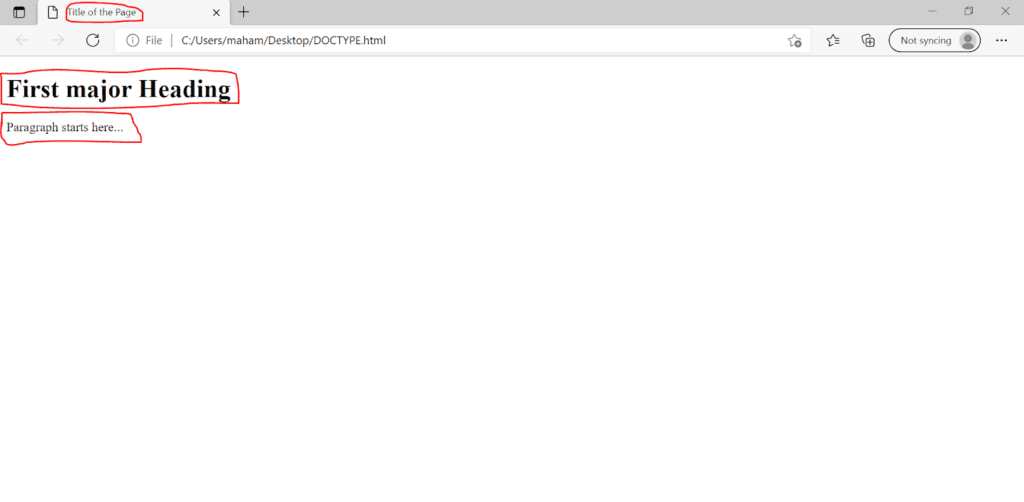There is no comparison between HTML vs Python because both are different kinds of programming languages.
HTML is an easy-to-learn text-based markup language that is used to build structures and layouts of a web page or app. While Python is a difficult programming language that is used for building apps, websites, or classic games, and also it’s used in Machine learning. You can create many projects in python.
Both HTML and Python are completely different. In fact, HTML is not a programming language such that you can’t build logic or function while in python you can create logic and functions.
Moreover, It isn’t necessary to know HTML before python or python before HTML if you want to learn python or HTML. Each has a different application. HTML, however, requires knowledge of CSS and javascript.
You can start learning python from these crash python courses.
Let’s get a closer look at both of these languages and see why they differ.
HTML Vs Python
It entirely depends on what you want to make. If you wish to make a web page or dropdown menu, then learning only Python is not going to help you.
You’d definitely need some extra skills related to HTML in the development of a webpage, for instance, CSS for creating a dropdown menu. On the other hand, if you want to make a program like automating software, then learning only HTML will never help you accomplish the job.
As HTML has no role in the development of games. So, Python will definitely be your savior in this situation. Knowing both HTML & Python would give you the capability to develop software and web pages according to your requirements.
In final words, Python possesses far more capabilities than HTML as it can be used to make a computer do anything or develop any kind of software. Contrarily, HTML is much more domain-specific as it only focuses on developing the general outlook of a web page.
HTML- Overview

HTML is a HyperText Markup Language used to create pages on the web. It is the easiest for beginners to understand and implement. It is a simple markup language that consists of instructions written in text file format.
However, these are special text files that contain rule-based instructions. Instructions must be written under various tags to create a webpage.
All these tags create a specific element of the web page. There is an opening and ending tag to create an HTML element.
- <tagname> Some web content here… </tagname>
One such example of these tags is down here, which creates the first heading on the webpage.
- <h1>My First Heading</h1>
The language also describes the structure of the web page, as shown in this example of a complete webpage. <!DOCTYPE html> is a tag that tells the browser that this is an HTML file so that it can easily interpret it. Whereas, other tags structure the elements of the webpage altogether as described in this example.
HTML Code Example:
<!DOCTYPE html>
<html>
<head>
<title>Title of the Page </title>
</head>
<body>
<h1> First major Heading</h1>
<p> Paragraph starts here…</p>
</body>If the User creates code for a web page in text files of, let’s say, .txt extension. Then the user has to open these text files on web browsers by changing their extension .html.
It is the job of web browsers like Google Chrome or Internet Explorer to interpret the instructions written in these files and display a corresponding web page. From the above code, your webpage should possibly look like this.

PYTHON- Overview
Python is an object-oriented programming language that is used to create sets of instructions that are to be executed on Computers, not on web browsers. Object-oriented programming languages are based on data types and classes that have their objects. In 1991, Guido Van Rossum designed Python for multiple purposes which involve software development, server-side web development, mathematics, scripting, etc.

It has features of built-in data structures, dynamic typing, and binding which help in Rapid Application Development.
Python performs several operations based on user requirements. Coders use it to connect to database systems and it allows them to read and modify files.
Python is a high-level language (close to human languages), that has become less complex over time. Its syntax is easy to learn and use, which increases the readability of the program.
For instance, Python allows indentation and white spaces to define the scope of the loops which is not possible in other programming languages like C++, Java, etc. Also, in python, a command ends with the end of line whereas, in C++, a command is ended by a semicolon.
The latest version of Python is Python 3 which is being widely used these days for software development. Here is a sneak peek of how it feels like coding in Python.
Python Code Example:

On your left, is a code of 2 print statements. And on the right, you can see the output of 2 statements.
